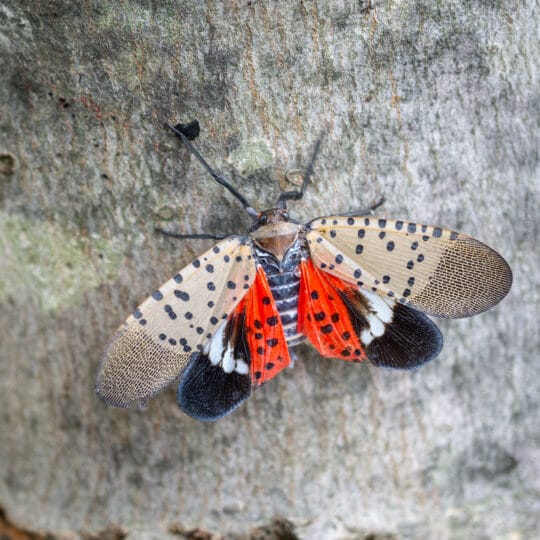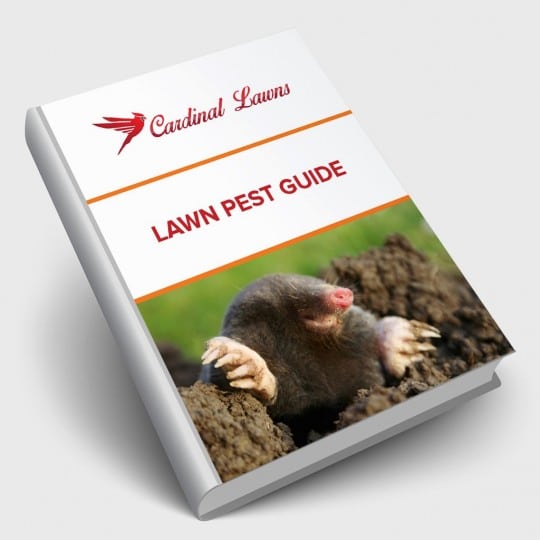Spotted Lanternfly Treatment Options
And How to Control Infestations
Posted
June 10, 2021

If you haven’t already experienced a spotted lanternfly infestation, consider yourself lucky. These invasive pests have been around since about 2014 and are only growing in numbers. This may be the year you see them in your area, so keep the following lanternfly treatment tips handy.
What are Spotted Lanternflies
At first, you may notice their egg sacks stuck to tree trunks and smooth building surfaces. Getting rid of this mud-like mass is the first step in controlling an infestation. If the eggs are overlooked, you may spot the young lanternflies: a tiny black insect with white spots. Soon enough, the young evolve into the most recognizable lanternfly with spotted wings and a flash of vibrant red underneath. Even though they have wings and can fly, you’ll usually see them jumping from place to place.
Lanternfly Damage
An infestation of lanternflies can ruin certain types of plants, including:
- ornamental trees
- grapevines
- fruit trees
- woody plants
- hardwood trees like birch and maple
When they feed, lanternflies excrete a sticky substance that can also destroy nearby vegetables, flowers, or shrubbery.
While these insects are more dangerous to plants than humans, their presence can become annoying, especially in their large numbers. Even sidewalks and walkways can become littered with flattened lanternflies from those trying to stop them in their tracks.
Lanternfly Treatment
Since lanternflies have only been around since 2014, communities are still trying to find the best way to contain them while not doing harm to other living things. Many areas are asking residents to report any lanternfly sightings to local offices to track progress. Here are some tips on containing these invasive creatures:
- Eliminate the eggs. Learn how to spot the first signs of the muddy egg masses and work to remove them from trees and buildings. Depending on where you live, these masses may appear from late September through May. The best way to remove them is by scrapping with a sharp knife or other edged tool into a sealable bag or container for disposal.
- From late April to early November, the young lanternfly nymphs start to climb the trunks of trees to feed. While you can try to capture these pests in a disposable container, they may escape. Use caution when using any form of insecticide or other control method that could harm other wildlife in and around the same areas.
- Approved insecticide can also be used on adult lanternflies, or you can also try the same capture, swatting, or stomping methods.
Another option is to call a professional pest control company. Cardinal Lawns has experienced technicians that can evaluate the current lanternfly infestation and help you plan ongoing treatment.
Post Lanternfly Treatment Plan
Even after you’ve dealt with lanternflies for the season, your job is not over. They’re likely to return next season, especially if you’re not vigilant about the next crop of pests. Continue monitoring your plants, especially ones that have been targeted before. Contact Cardinal Lawns for more information on lanternflies in your area and how you can keep your yard clear.

Download Your FREE Lawn Pest Guide
Pests become most prevalent during the heat and humidity of summer. Take some time to learn about the signs of infestations before any damage can be caused to your landscape. This handy guide will teach you how to spot common lawn pests and how to keep them from causing harm to you and your property.